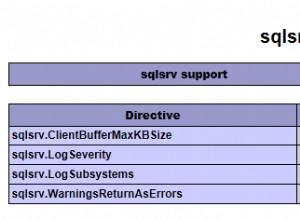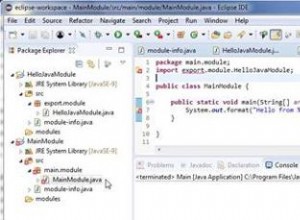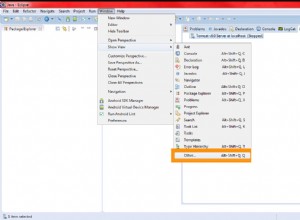L'utilizzo di un cursore richiede un codice standard standard per circondarlo.
L'utilizzo di un cursore per chiamare una procedura memorizzata per ogni set di valori dalla tabella richiede essenzialmente lo stesso boilerplate. SELECT i valori che vuoi passare, dal punto in cui li stai ricevendo (che potrebbe essere una tabella temporanea, una tabella di base o una vista e può includere chiamate a funzioni memorizzate) e quindi chiamare la procedura con quei valori.
Ho scritto un esempio sintatticamente valido di quel codice boilerplate, di seguito, con commenti per spiegare cosa sta facendo ciascun componente. Ci sono poche cose che non mi piacciono di più dell'essere chiesto di fare qualcosa "solo perché" -- quindi tutto è (si spera) spiegato.
Hai menzionato di chiamare la procedura con più valori, quindi questo esempio usa 2.
Nota che gli eventi che le accadono sono in un ordine specifico per una ragione. Le variabili devono essere dichiarate prima, i cursori devono essere dichiarati prima dei loro gestori continue e i loop devono seguire tutte queste cose. Questo dà l'impressione che ci sia una certa rigidità estrema, qui, ma non è proprio così. Puoi ripristinare l'ordine annidando un codice aggiuntivo all'interno di BEGIN ... END blocchi all'interno del corpo procedurale; per esempio, se avessi bisogno di un secondo cursore all'interno del ciclo, lo dichiareresti semplicemente all'interno del ciclo, all'interno di un altro BEGIN ... END .
DELIMITER $$
DROP PROCEDURE IF EXISTS `my_proc` $$
CREATE PROCEDURE `my_proc`(arg1 INT) -- 1 input argument; you might not need one
BEGIN
-- from http://stackoverflow.com/questions/35858541/call-a-stored-procedure-from-the-declare-statement-when-using-cursors-in-mysql
-- declare the program variables where we'll hold the values we're sending into the procedure;
-- declare as many of them as there are input arguments to the second procedure,
-- with appropriate data types.
DECLARE val1 INT DEFAULT NULL;
DECLARE val2 INT DEFAULT NULL;
-- we need a boolean variable to tell us when the cursor is out of data
DECLARE done TINYINT DEFAULT FALSE;
-- declare a cursor to select the desired columns from the desired source table1
-- the input argument (which you might or might not need) is used in this example for row selection
DECLARE cursor1 -- cursor1 is an arbitrary label, an identifier for the cursor
CURSOR FOR
SELECT t1.c1,
t1.c2
FROM table1 t1
WHERE c3 = arg1;
-- this fancy spacing is of course not required; all of this could go on the same line.
-- a cursor that runs out of data throws an exception; we need to catch this.
-- when the NOT FOUND condition fires, "done" -- which defaults to FALSE -- will be set to true,
-- and since this is a CONTINUE handler, execution continues with the next statement.
DECLARE CONTINUE HANDLER FOR NOT FOUND SET done = TRUE;
-- open the cursor
OPEN cursor1;
my_loop: -- loops have to have an arbitrary label; it's used to leave the loop
LOOP
-- read the values from the next row that is available in the cursor
FETCH NEXT FROM cursor1 INTO val1, val2;
IF done THEN -- this will be true when we are out of rows to read, so we go to the statement after END LOOP.
LEAVE my_loop;
ELSE -- val1 and val2 will be the next values from c1 and c2 in table t1,
-- so now we call the procedure with them for this "row"
CALL the_other_procedure(val1,val2);
-- maybe do more stuff here
END IF;
END LOOP;
-- execution continues here when LEAVE my_loop is encountered;
-- you might have more things you want to do here
END $$
DELIMITER ;




